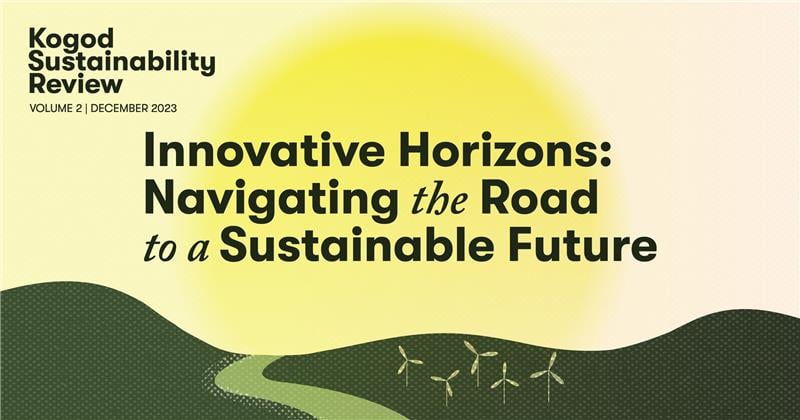
Albert Cho
Senior VP, Chief Strategy and External Affairs Officer, Xylem
Long an afterthought in serious discussions of policy, economics, or business, water has begun to infiltrate the boardroom. It’s not simply that billions of people still lack access to clean water and sanitation, though this has long been true. What is different now is that today’s leaders are facing an unprecedented array of external disruptions that require new solutions—and success increasingly depends on our ability to manage water more sustainably than ever before.
Take geopolitics. Tensions in the Asia-Pacific region and legislation such as the ‘CHIPS Act’ are spurring demands to re-shore industrial activity in the United States, especially in strategic sectors such as semiconductor manufacturing. Making microchips is water-intensive; a large plant can use 10 million gallons of water a day—the same consumption as 300,000 households. In Taiwan, the global capital of semiconductor manufacturing, a massive drought recently threatened to cripple the country’s microchip plants, and leaders had to resort to truck in water to keep production flowing. Now, semiconductor companies like Intel and TSMC are building massive new plants in states like Arizona that have well-developed supply chains and a strong base of skilled workers, but also face serious water supply challenges, including a persistent drought impacting the Colorado River. Reshoring in other sectors – including pharmaceuticals and broader industrial manufacturing – will similarly increase demand for water across regions.
Or take artificial intelligence. At launch, ChatGPT captured the public imagination and became the fastest-growing consumer technology in history, spawning competitors and ever more sophisticated and data-intensive services. But the cloud behind ChatGPT is very thirsty. It depends on a vast network of data centers cooled by water¸—so much water that every 20 to 50 questions require ChatGPT to “drink” the equivalent of a 16.9oz water bottle. Ever greater volumes of data are already causing the water footprint of companies like Microsoft and Google to grow at double digits, with Google’s data centers in the US alone consuming 3.3 billion gallons of water in 2021.
Given the tremendous growth potential of generative AI-based business models, the sector’s water footprint could expand dramatically, competing with other uses of water in the communities hosting these data centers."

Albert Cho
Senior VP, Chief Strategy and External Affairs Officer, Xylem
Or take the challenge of responding to climate change. Scientists agree that achieving a “net-zero” emissions pathway will require wide-ranging investments to decarbonize the economy, including a transformational shift to renewable energy sources and the electrification of transportation and other key sectors. But the electric vehicles, energy storage technologies, and hydrogen production processes that are needed to support this transition will drive tremendous increases in demand for water. In the mining sector alone, the energy transition could see nickel demand triple, copper demand more than double, and demand for lithium grow by 700 percent. The two countries with the largest reserves for these metals, Chile and Australia, are also among the world’s most arid. Even relatively water-abundant regions of the world, such as Europe, are facing challenges, with local activists challenging the expansion of a Tesla factory in Germany due to concerns about its impact on water scarcity in the region.
These challenges would be monumental on their own, and climate change is making it even harder to manage water sustainably, with over 5 billion people projected to live in areas of water stress by 2050. From the Panama Canal to the Rhine and the Mississippi River, drought-induced lower water levels are disrupting shipping channels and threatening hydropower dams. In the face of climate change, technological disruption, and major shifts in the global macro environment, the water management tools of yesterday are no longer up to the job. Globally, an investment of $15 billion across industries is already either stranded or at risk because of doubts or disputes about water availability or water management, and that number could grow dramatically.
Scaling up Proven Solutions to Enable Water Security
The good news is that many of the solutions required to address this crisis exist today, and scaling them up will create new jobs, business opportunities, and a more stable foundation for global growth.
One promising area of growth is in digital technologies to improve water conservation and efficiency by monitoring, predicting, and optimizing the performance of water systems. In the US, municipal water systems lose about 20 percent of the water they produce on the way to the customer through underground leaks. Add to that the fact that many homes and businesses have hidden leaks that add significantly to their usage, amounting to an additional trillion gallons of water a year. The flip side of all this waste is a tremendous opportunity to use established and emerging technologies to cut this water loss. For example, implementing advanced metering infrastructure helps utilities identify leaks on customer premises in real time and alert them to help them reduce their bills and their water consumption. Forward-looking cities like Valencia in Spain have reduced losses by 30 percent by building “digital twins” of their water networks using real-time sensors and advanced data analytics, enabling them to identify losses and repair leaks efficiently. Cutting water waste and water losses using these tools is one of the most effective ways to expand water availability to support future growth.
A second category of solutions is water recycling and reuse.
Today, water flows through cities and industries: clean water comes in, and wastewater gets treated and goes out. In the future, water will flow around them in a much more circular fashion: clean water comes in, wastewater gets treated to an even higher standard, and the safely purified water comes back into the system for another use."

Albert Cho
Senior VP, Chief Strategy and External Affairs Officer, Xylem
The semi-conductor industry has made tremendous progress on this front with water recycling rates of 80-90 percent, enabling even arid regions like Arizona to host chip fabrication plants. If scaled across municipalities and industries around the world, proven approaches to water recycling and reuse would make a tremendous contribution to global water security.
Third, there is a diverse category of new innovations that are at earlier stages of development ranging from cooling data centers without using water at all, to improving the efficiency of agricultural water usage, and capturing water directly from air. A rapidly expanding ecosystem of start-ups, venture capital firms, and corporate innovation groups is forming to help develop and scale these solutions, which provides further cause for optimism.
Seizing the business opportunity: championing water security amidst risks
In the face of pressing water challenges, the imperative to act is clear, and the technology to address these issues is readily available. The real opportunity lies in the hands of industry and policymakers to scale approaches that work and drive innovation to identify new and better tools.
We practice this every day at Xylem by developing reliable technologies that drive more sustainable water practices and collaborating with businesses to manage essential water needs and fortify the resilience and sustainability of their operations. We work closely with start-ups, universities, and venture capital partners through a program called Xylem Innovation Labs. And we partner closely with non-profit organizations and advocacy groups around the world to elevate the cause of water. On a local scale, Xylem has leveraged its own technology to achieve a remarkable 26 percent annual reduction in total water usage.
But we have no illusions that any one company can solve the world’s water challenges alone. If we are to achieve climate resilience, succeed in the energy transition, build secure and sustainable supply chains, and fuel the next wave of innovation and growth, it is imperative that resilient water management becomes a collective priority for stakeholders and institutions in society. This transformation will materialize only when each of us commits to responsible water usage, embracing innovative technologies and approaches. The message is clear: invest in water sustainability. Our collective prosperity hinges on it.
